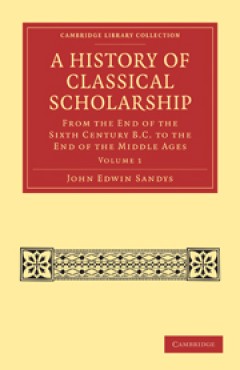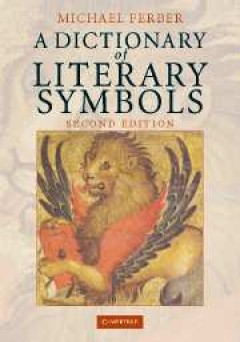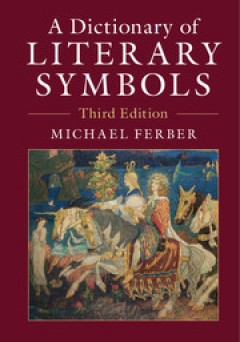Filter by

A History of Classical Scholarship
Sir John Edwin Sandys (1844–1922) was a leading Cambridge classicist and a Fellow of St. John's College. His most famous work is this three-volume History of Classical Scholarship, published between 1903 and 1908, which remains the only large-scale work on the subject to span the entire period from the sixth century BCE to the end of the nineteenth century. The history of classical studies wa…
- Edition
- -
- ISBN/ISSN
- 9780511903731
- Collation
- -
- Series Title
- Cambridge Library Collection - Classics
- Call Number
- -

A History of Classical Scholarship
Sir John Edwin Sandys (1844–1922) was a leading Cambridge classicist and a Fellow of St. John's College. His most famous work is this three-volume History of Classical Scholarship, published between 1903 and 1908, which remains the only large-scale work on the subject to span the entire period from the sixth century BCE to the end of the nineteenth century. The history of classical studies wa…
- Edition
- -
- ISBN/ISSN
- 9780511903731
- Collation
- -
- Series Title
- -
- Call Number
- -

A History of Classical Scholarship
Sir John Edwin Sandys (1844–1922) was a leading Cambridge classicist and a Fellow of St. John's College. His most famous work is this three-volume History of Classical Scholarship, published between 1903 and 1908, which remains the only large-scale work on the subject to span the entire period from the sixth century BCE to the end of the nineteenth century. The history of classical studies wa…
- Edition
- -
- ISBN/ISSN
- 9780511903717
- Collation
- -
- Series Title
- Cambridge Library Collection - Classics
- Call Number
- -

A Guide to Neo-Latin Literature
Latin was for many centuries the common literary language of Europe, and Latin literature of immense range, stylistic power and social and political significance was produced throughout Europe and beyond from the time of Petrarch (c.1400) well into the eighteenth century. This is the first available work devoted specifically to the enormous wealth and variety of neo-Latin literature, and offers…
- Edition
- -
- ISBN/ISSN
- 9781139248914
- Collation
- -
- Series Title
- -
- Call Number
- -

A Dictionary of Literary Symbols
This is the first dictionary of symbols to be based on literature, rather than 'universal' psychological archetypes or myths. It explains and illustrates the literary symbols that we all frequently encounter (such as swan, rose, moon, gold), and gives hundreds of cross-references and quotations. The dictionary concentrates on English literature, but its entries range widely from the Bible and c…
- Edition
- -
- ISBN/ISSN
- 9780511481475
- Collation
- -
- Series Title
- -
- Call Number
- -

A Dictionary of Literary Symbols
This is an expansion of the first dictionary of symbols to be based on literature, rather than on 'universal' psychological archetypes or myths. It explains and illustrates the literary symbols that we frequently encounter (such as swan, rose, moon, gold) and gives thousands of cross-references and quotations. The dictionary concentrates on English literature, but its entries range widely from …
- Edition
- -
- ISBN/ISSN
- 9781316771426
- Collation
- -
- Series Title
- -
- Call Number
- -
 Computer Science, Information & General Works
Computer Science, Information & General Works  Philosophy & Psychology
Philosophy & Psychology  Religion
Religion  Social Sciences
Social Sciences  Language
Language  Pure Science
Pure Science  Applied Sciences
Applied Sciences  Art & Recreation
Art & Recreation  Literature
Literature  History & Geography
History & Geography